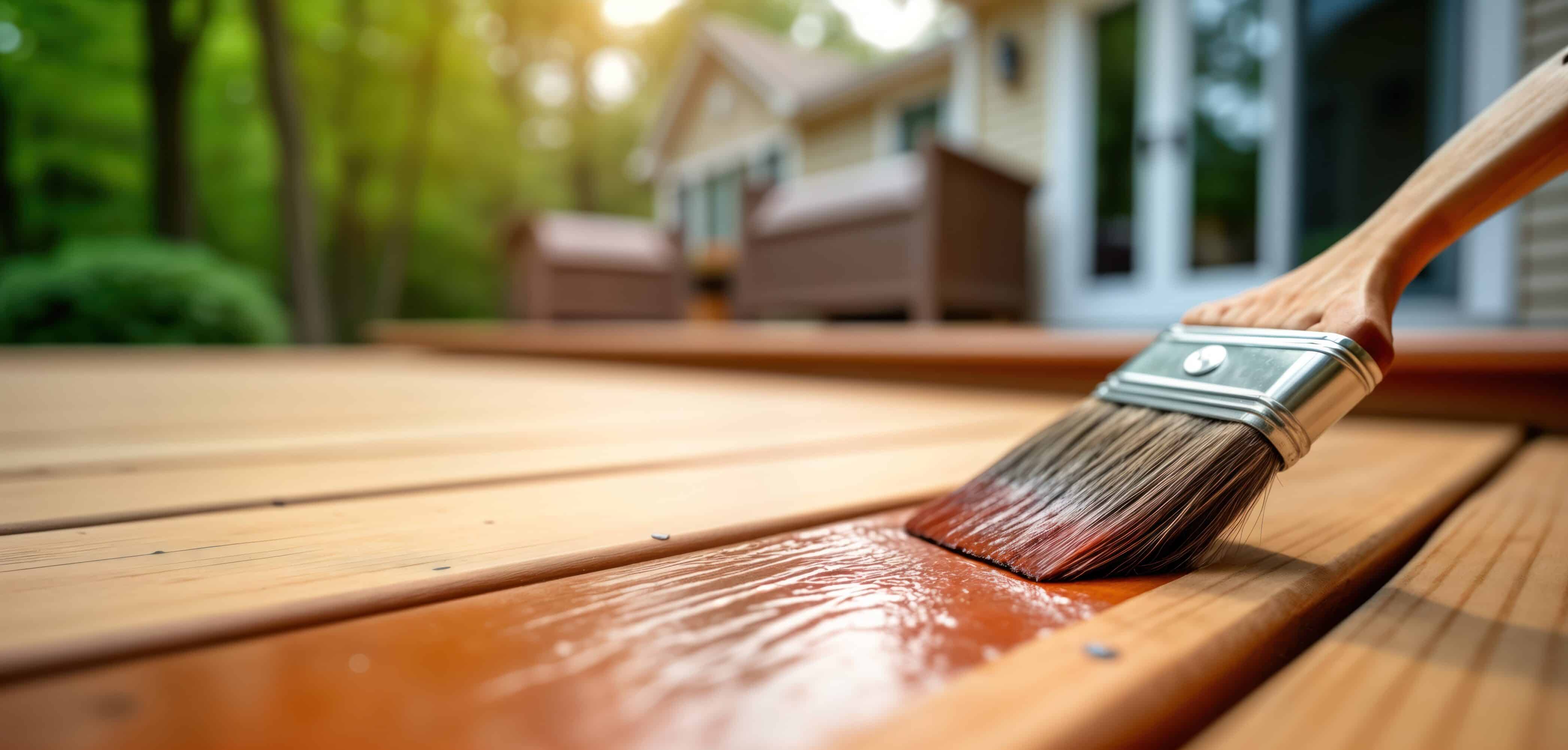
Tips for Painting Pressure-Treated Wood
Can You Paint Pressure-Treated Wood? Tips and Techniques
Pressure-treated wood is a durable, long-lasting choice for outdoor projects like decks, docks, and fences. If you’re looking to add a splash of color or a protective finish, you might be wondering if you can paint pressure-treated wood. The answer is yes—but with a few key considerations.
Decks & Docks is your source for high-quality lumber, pressure-treated wood, and all the top-notch building materials you’ll need for a durable, professional-looking finish. Follow these essential painting tips from our expert team to ensure your project looks great and lasts for years!
Why is Pressure-Treated Lumber Different than Natural Wood?
Pressure-treated wood is a type of lumber that has been treated with chemical preservatives to resist rot, decay, fungus, and termites. This process involves forcing water and preservative chemicals into the wood in a special depressurized holding tank. The result is an exterior-grade wood ideal for building decks, fences, sheds, and other outdoor projects. The pressure treatment also makes the wood more durable and long-lasting, but unlike untreated wood, pressure-treated lumber contains preservatives and moisture that can make painting tricky. If done incorrectly, paint can peel, bubble, or fail to adhere properly.
Pressure-treated wood is built to withstand the elements, but if you want to enhance its appearance with paint or a stain, proper preparation is key. The preservatives and moisture in the wood can make adhesion difficult, leading to peeling or bubbling if not handled correctly.
1. Let the Wood Dry First
Freshly pressure-treated wood is often too damp for paint to stick effectively. If you try painting it too soon, the moisture inside will push the paint off as it evaporates. The drying time varies based on wood type, treatment method, and weather conditions.
Generally, it’s best to wait at least three to six months if you want to paint or stain pressure-treated wood. Storing the wood properly during this drying process is crucial to prevent warping and ensure effective treatment adherence.
If you can’t wait, Decks & Docks offers Kiln-Dried After Treatment (KDAT) or Air-Dried After Treatment (ADAT) lumber to expedite the process.
How to Check if the Wood is Dry Enough:
- Sprinkle a few drops of water on the surface. If you see water beads form, the wood is still too wet. If it soaks in, it’s ready to paint. This test can be repeated every few days until the wood is dry enough to accept paint.
- Use a moisture meter to ensure the wood has a moisture content of 12-15% or lower.
Ensuring the wood is dry is crucial for the paint to adhere correctly and to avoid issues like peeling or bubbling.
2. Clean the Surface Thoroughly
Dirt, mildew, and leftover chemicals can prevent paint from adhering. Before painting, clean the wood with a mild detergent and water or use a specialized wood cleaner. For tough stains, a pressure washer can help, but use a low setting to avoid damage.
After washing, let the wood dry for 24-48 hours before proceeding to the next step.
3. Apply a High-Quality Primer
Primer is crucial for ensuring your exterior paint really bonds well with the wood. Choose an oil-based or latex primer designed for exterior wood. Oil-based primers penetrate better, but latex options are easier to work with and clean up. Using a paint sprayer can save time and provide a smooth, even finish, making your project look professional and polished.
How to apply primer:
- Use a high-quality brush or roller to apply a thin, even coat.
- Allow the primer to dry completely (check the manufacturer’s recommendations, but typically, 24 hours is sufficient).
- Lightly sand the primed surface with fine-grit sandpaper (around 180-220 grit) to smooth out any rough patches.
4. Choose the Right Paint
Not all paints work well on pressure-treated wood. Oil-based paints are not suitable for pressure-treated wood as they do not adhere well and can lead to poor results. Use an exterior latex paint or a water-based acrylic paint designed for wood surfaces. These water-based paints are flexible enough to expand and contract with the wood, preventing cracking and peeling, and will absorb paint.
What kind of paint finish is suitable for pressure-treated wood? A satin or semi-gloss provides durability and easy maintenance, while a flat finish offers a more natural look but will require more frequent touch-ups.
5. Apply Multiple Thin Coats
Painting pressure-treated wood requires patience. Instead of applying one thick coat, use two to three thin coats so the paint adheres properly and maximizes its longevity.
Here are a few tips for the painting process:
- Use a high-quality synthetic brush, roller, or paint sprayer.
- Apply the first coat in the direction of the wood grain.
- Allow 4-6 hours of drying time between coats.
- Lightly sand between coats for a smooth, professional finish.
6. Consider Sealing for Extra Protection
Even with paint, pressure-treated wood benefits from additional sealing. A clear, water-repellent sealer adds an extra protective layer against moisture and UV rays, helping to prevent peeling and fading over time.
7. Regular Maintenance Extends Longevity
Painted pressure-treated wood will last longer with routine maintenance. Inspect your painted pressure-treated lumber surfaces yearly and touch up any areas where the paint has chipped or worn away. Cleaning the surface with a mild detergent and reapplying a sealer every few years will help keep your wood looking fresh.
Get All the Building Supplies You Need at Decks & Docks!
Painting pressure-treated wood requires a little elbow grease and patience, but when done right, it can really spruce up the look of your outdoor structures!
At Decks & Docks, we have expertise with all sorts of treated lumber, from pressure-treated wood to marine lumber and more. We can also recommend primers, the best paint, and sealers to ensure your painting project is a success—just ask!Whether you’re building your deck boards, a new dock, or refreshing an old deck with a new coat, we have the materials and expertise to help. Visit your nearest Decks & Docks location or shop online at our partner, The Deck Store, for all your decking and docking project needs today!
- About the Author
- Latest Posts
Dan has worked for Decks and Docks for over twenty-five years. He managed the original Decks and Docks store in St. Pete, which is our largest store. Dan is simply the best all around. He knows more about this company and our products than probably anyone else. Dan currently works in Sales at our corporate office.
